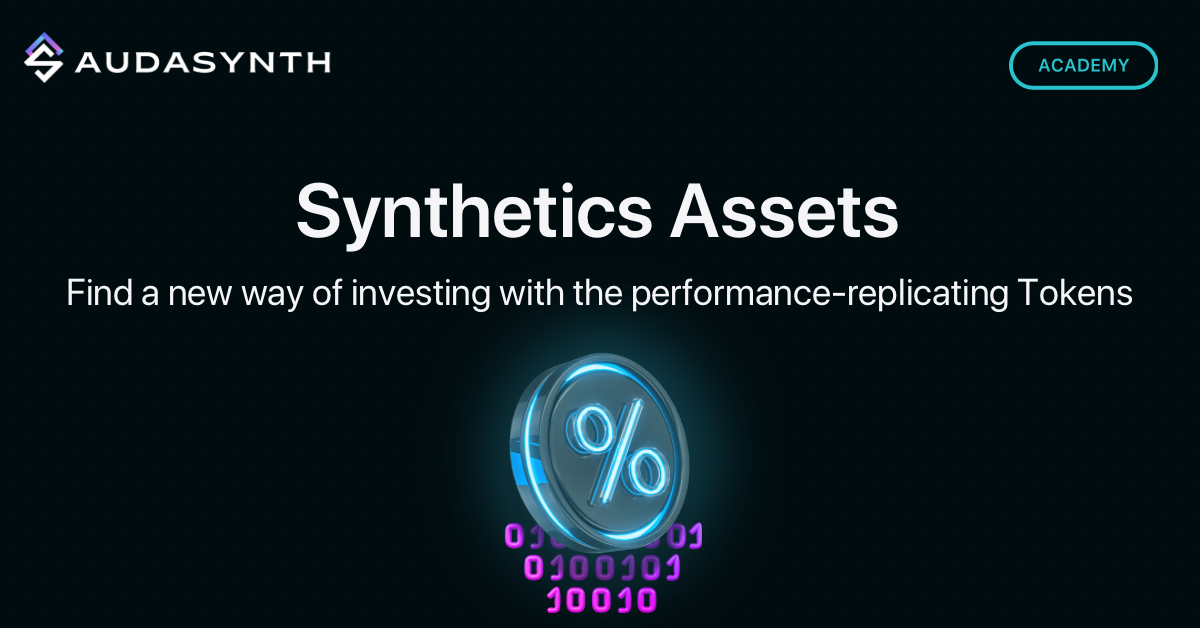What is a Synthetic Asset?
Historically, government bonds and stocks were paper assets owned by their holders. Gold was previously used to back and redeem money in a wider financial sense.
Despite being represented as ‘1s’ and ‘0s’ within servers, these financial instruments still hold the same roles they did before digitization. The increasing global reliance on digital resources, with their ease of storage and application, has led more and more assets to move online over the years.
Synthetic assets (also called “Synths”) are a natural evolutionary point in this process. In the crypto world, this term is used more broadly to describe tokens that replicate the price of certain physical and non-physical assets.

In summary, a synthetic asset is typically a token on a blockchain, whose value follows that of an underlying asset (such as a stock, index, or currency) and can be traded among various blockchain addresses, in infinitesimal fractions, at a very low cost. Thanks to this feature, the synthetic asset allows the holder to achieve unprecedented levels of exposure and diversification.
How are Synths Created?
The intention is to leverage the immutability and transparency of the Blockchain. This way, users have the ability to verify at any time whether a particular synthetic is created (“minted“), destroyed (“burned“), or traded on the market.
The creation of a synthetic asset starts with deciding the goal of the token creation, i.e., what the asset aims to represent (e.g., a synthetic replicating the S&P500).
Once data is extracted from authoritative sources, the development of the pricing algorithm begins, which numerically converts such data into the asset’s price, displayed on the platform and ready to be traded. Each asset has its own mathematical formulas and algorithms that create its price.
Where Does the Price of Synths Come From?
Synthetic assets follow the value of the underlying asset through oracles, both centralized and decentralized, which transcribe the value into the smart contract associated with the token itself.
You may be wondering what oracles are…
AudaSynth oracles follow mathematical formulas that exclusively take values from authoritative and secure sources, aggregate them, and provide the ideal output price, in order to limit arbitrage opportunities and ensure the security of each product.

Why Use Synthetic Assets?
AudaSynth aims to create synthetic assets that differ from the few currently available on existing platforms. At the moment, the vast majority of traditional derivatives have no equivalent in tokenized form.
Providing such products (albeit tokenized) to the niche market that uses them every day is our main goal. Additionally, AudaSynth aims to create innovative synthetics ad-hoc through synthetic replication of the underlying asset. The greatest strength of synthetic assets is their versatility: any existing continuous numerical value in the world can become a synthetic token. Emerging market indices or stocks, commodities, other derivatives, company KPIs, art, collectibles. The only limit is imagination…
In addition, synthetic assets allow holders to reduce the fees associated with the underlying asset. For example the managament fee associated with a long position in a physical gold or a related ETC/ETF.
Read AudaSynth documentation for further details regarding synths.
Can I Adopt AudaSynth Synthetic Assets on My Platform?
The synthetic assets created by AudaSynth can be adopted by other DeFi platforms operating on compatible blockchains available and compatible with the project.
Follow AudaSynth on Twitter and Telegram to stay updated!
Twitter/X: https://twitter.com/AudaSynth
Telegram Channel: https://t.me/audasynth_ann

